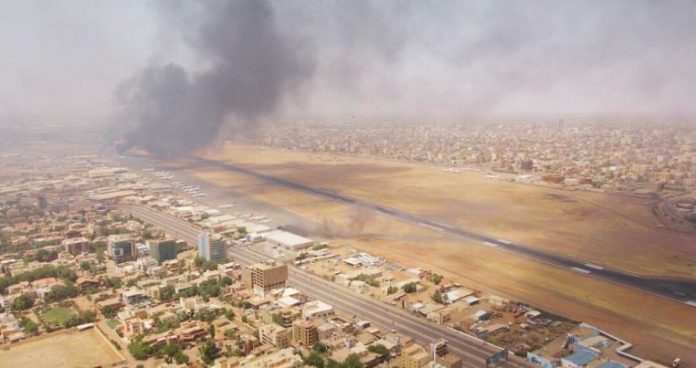Sudan has been facing a violent streak that has already claimed the lives of hundreds, sparked a humanitarian crisis, and forced foreign countries to evacuate their citizens. The recent violence that began on April 15 has plunged an already unstable region into further turmoil. It has stemmed from a power struggle between the country’s army and the paramilitary Rapid Support Forces (RSF).
Sudan Crisis: The Roots of the Conflict
Tensions had been increasing for a while between the 2 groups, who together overthrew a civilian government in a coup in October 2021. The situation came to a head with a controversial plan backed by the US and its allies. This plan wanted to start a new transition with civilian groups. The final agreement was supposed to be signed earlier in April, on the fourth anniversary of the overthrow of Omar al-Bashir, a longtime Islamist autocrat, in a popular uprising.
Both the army and the RSF had to give up their power under the plan but 2 requirements became a reason for disagreement. 1) the RSF would be integrated into the regular armed forces and 2) the army would be formally placed under civilian control.
Eventually the fighting broke out and both sides blamed each other for starting it. The army accused the RSF of illegally mobilizing in the days leading up to the conflict, while the RSF claimed that the army had attempted to take full control in a plot with Bashir loyalists as they moved on key sites in Khartoum.
Two Egos Threaten the Entire Country
The 2 key actors in the conflict are General Abdel Fattah al-Burhan, head of the army and leader of Sudan’s ruling council since 2019, and his deputy on the council, RSF leader General Mohamed Hamdan Dagalo, commonly known as Hemedti.
Hemedti had aligned himself with civilian parties from a coalition, the Forces for Freedom and Change (FFC), which shared power with the military between Bashir’s overthrow and the 2021 coup. Diplomats and analysts suggest that this was part of a strategy by Hemedti to transform himself into a statesman and cement his position at the center of power.
The current fighting could not only destroy hopes of democratic elections and economic stability in Sudan but also destabilize a volatile region bordering the Sahel, the Red Sea, and the Horn of Africa. It could also play into competition for influence in the region between Russia and the United States, and between regional powers who have courted different actors in Sudan.
The Role of International Community
Western powers including the US have supported Sudan’s transition to democratic elections. Saudi Arabia and the UAE also want to influence events in Sudan to reduce Islamist influence and promote stability in the region. Russia reportedly wants to build a naval base on the Red Sea and several UAE-based companies have been lining up to invest in Sudan.
World leaders have called for ceasefires and dialogue, but there has been little cooperation from the warring factions, despite a temporary reduction in violence. The conflict is causing a growing humanitarian crisis in a country already reliant on aid, which could lead to an increase in refugees. Sudan’s army has superior resources, including air power and an estimated 300,000 troops, while the RSF has an estimated 100,000 troops deployed across major cities. This conflict is happening on top of a long-standing economic and humanitarian crisis.


